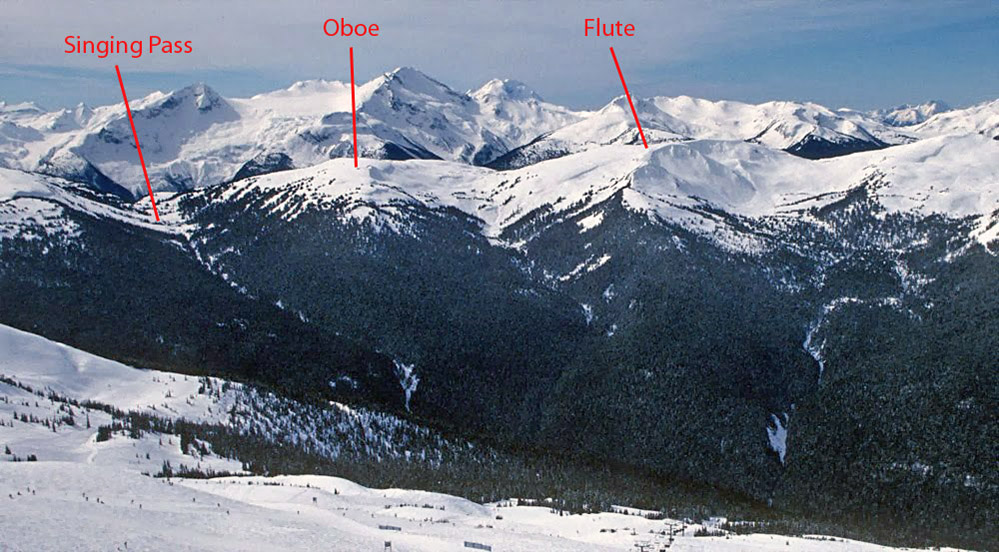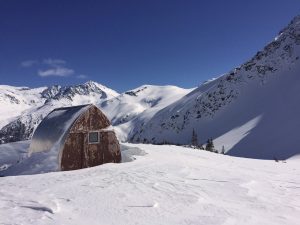15 – Spearhead Huts and Beyond
BCMC member Werner Himmelsbach and Karl Ricker, a longtime Whistler local and member of the UBC-VOC, were the first to ski the Spearhead Traverse back in 1964 and have since then dreamed of having multiple huts built to assist in traveling the route.

Taken from the Spearhead looking to the entrance of Singing Pass and the Oboe and Flute musical bumps located on the eastern side of the Whistler Resort Ski Boundary.
The Spearhead Traverse consists of a u-shaped route from the backside of the peak of Whistler Mountain across glaciers at the head of Singing Pass and around to Wedgemount Lake, located on the north side of Blackcomb Mountain. In 2010, the Spearhead Huts Society formed to create a hut-to-hut experience that would make the Spearhead Traverse a base for year-round expeditions.

The Himmelsbach Hut, photo taken in March 2017, will be replaced once the first of the Spearhead Huts is finished and hopefully, the BC Parks Service will relocate the Hut to a new location.
Over the last seven years, the Spearhead Huts Society has held fundraisers to make this dream a reality, and in the fall of 2014 received approval from the BC Parks Service to begin construction. Construction of the first Spearhead Hut began in July 2017 near Russet Lake; once completed, it will replace the Himmelsbach Hut.
These new huts will be built following different plans and won’t be constructed in the Gothic arch style. The huts will include the use of solar panels (for lighting), potable water delivery systems and the potential use of composting toilets, which would mean these facilities could be constructed adjacent or within the Hut facility. The Society has plans to build two more huts within the traverse.
The Pattison Hut, to be constructed by Mount Pattison, was the most challenging hut to site within the new chain because it needed to be built close to the Blackcomb ski lifts. Fundraising for this hut is still underway.
The MacBeth Hut, the hut to be constructed in the middle of the Spearhead Traverse, was the easiest site to choose within the chain of huts. The location will provide access to the Overlord Glacier and the Fitzsimmons and Diavolo Peaks.
The Gothic arch design has lasted for over 50 years in the Coast Mountains. This simple structure has provided mountaineers shelter and an escape from the weather as well as an opportunity to commune and learn from one another. While the design was used in other mountain ranges within British Columbia and Alaska, the Coast Mountains and the mountaineering clubs of British Columbia brought the design to life, and their huts will continue to serve members and backcountry enthusiasts for years to come.

